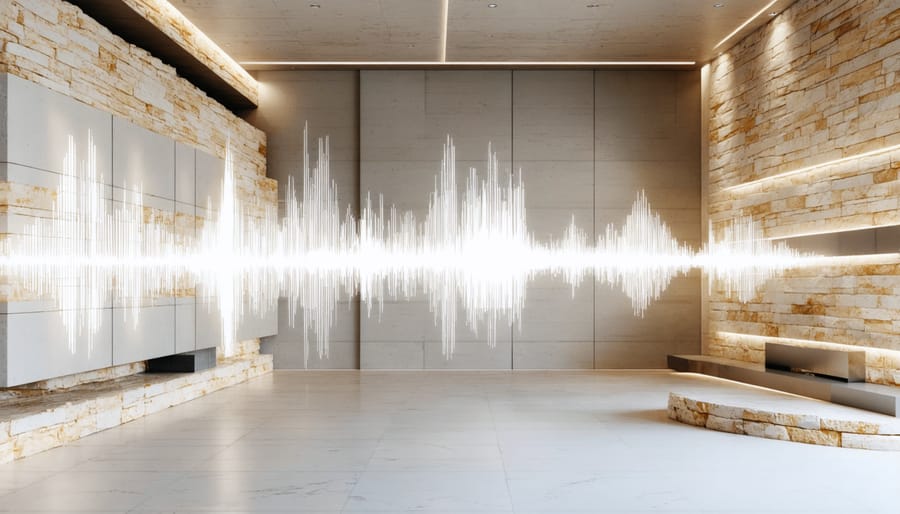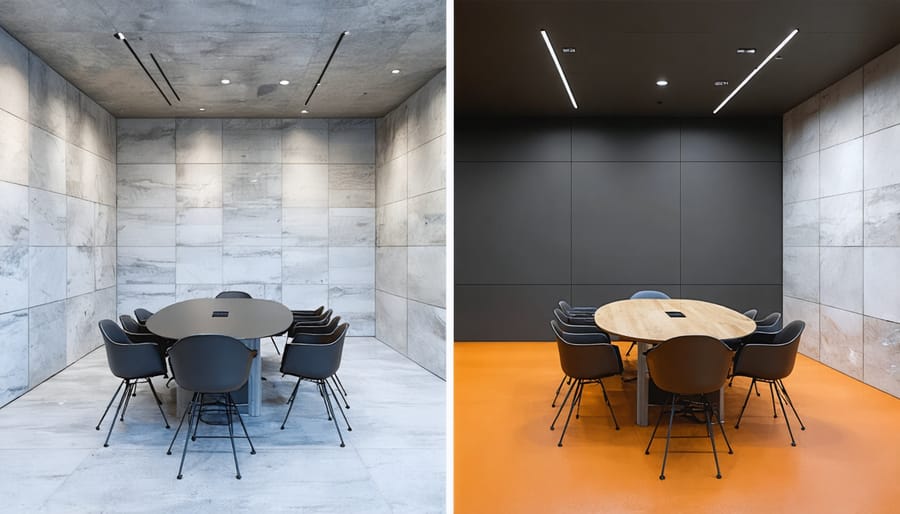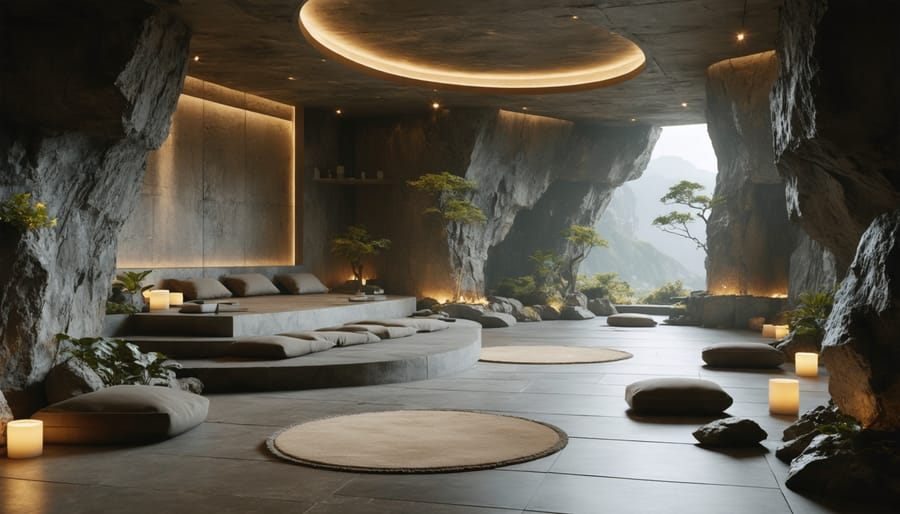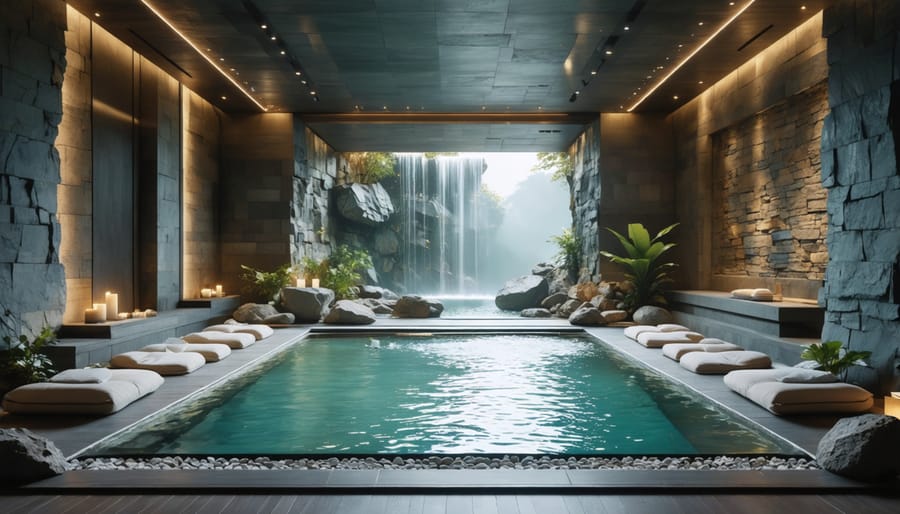Wellness transcends mere physical health, encompassing a delicate balance of mental, emotional, and environmental factors that shape our daily lives. As architects and designers increasingly focus on creating spaces that promote holistic well-being, understanding the six fundamental aspects of wellness becomes crucial for developing environments that truly nurture human flourishing. Natural materials, particularly the indoor wellness benefits of stone, play a pivotal role in crafting these therapeutic spaces. From the acoustic properties that foster mental clarity to the biophilic connections that ground us in nature, each element contributes to a comprehensive approach to wellness design. This exploration delves into the essential dimensions of wellness architecture, offering practical insights for professionals and property owners seeking to create spaces that actively promote health, balance, and vitality.
Join us as we examine how these six interconnected aspects of wellness can be enhanced through thoughtful design choices, with a particular focus on the remarkable properties of natural stone in creating environments that nurture both body and soul.

Physical Wellness: Sound Control for Better Health
Stress Reduction Through Sound Management
Natural stone’s inherent acoustic properties make it an excellent choice for creating serene environments that promote wellness through sound management. Dense materials like granite, marble, and limestone naturally absorb and diffuse sound waves, helping to reduce unwanted noise pollution that can contribute to stress and anxiety.
In busy spaces like offices or healthcare facilities, natural stone walls and flooring can significantly decrease sound transmission between rooms, creating quieter, more peaceful environments. These materials work in harmony with other elements to improve indoor air quality while maintaining optimal acoustic comfort.
Studies have shown that excessive noise can elevate cortisol levels, increase heart rate, and impair cognitive function. By incorporating natural stone elements strategically, architects and designers can create spaces that buffer occupants from disruptive sounds. For example, stone accent walls in meditation rooms or wellness centers can reduce echo and reverberation, enhancing the calming atmosphere essential for relaxation and healing.
The acoustic benefits of natural stone extend beyond noise reduction, contributing to an overall sense of tranquility that supports mental and emotional well-being.
Sleep Quality Enhancement
The acoustic properties of natural stone play a crucial role in creating environments conducive to quality sleep. Dense materials like granite and marble naturally absorb and diffuse sound waves, reducing external noise that can disrupt sleep patterns. When strategically incorporated into bedroom walls or flooring, these materials help create a peaceful sanctuary by minimizing sound transmission from adjacent spaces.
Studies have shown that maintaining ambient noise levels below 35 decibels significantly improves sleep quality. Natural stone’s inherent sound-dampening characteristics help achieve these optimal conditions, particularly in urban settings where external noise pollution can be problematic. The material’s thermal mass properties also contribute to maintaining stable room temperatures, another key factor in promoting restful sleep.
Beyond its functional benefits, natural stone’s organic textures and earthy tones create a calming aesthetic that supports the body’s natural circadian rhythm. When combined with proper acoustic design principles, stone elements can transform bedrooms into tranquil retreaters that promote deeper, more restorative sleep cycles. This natural sound control makes stone an excellent choice for both residential and hospitality applications where sleep quality is paramount.
Emotional Wellness: Creating Calming Spaces
Sound Absorption and Emotional Balance
Natural stone’s inherent acoustic properties play a crucial role in creating emotionally balanced environments. As an excellent sound absorber, stone surfaces help regulate noise levels and reduce echo, contributing to natural stone wellness properties that promote mental clarity and emotional stability. The varying textures and densities of different stone types, from porous travertine to dense granite, offer architects and designers flexible options for acoustic control in various spaces.
In meditation rooms and wellness centers, stone walls and flooring help create the perfect sound environment for relaxation and mindfulness practices. The material’s ability to dampen excessive noise while maintaining acoustic warmth makes it ideal for spaces where emotional balance is paramount. This natural sound regulation helps reduce stress triggers and creates a more harmonious atmosphere, supporting both individual well-being and group interactions in shared spaces.
Acoustic Privacy and Mental Peace
In today’s fast-paced world, acoustic privacy has become increasingly vital for maintaining mental well-being. The constant exposure to noise pollution can significantly impact our stress levels, concentration, and overall emotional health. Natural stone, with its inherent sound-dampening properties, plays a crucial role in creating peaceful environments that promote mental tranquility.
When properly implemented in architectural design, stone walls and partitions effectively reduce sound transmission between spaces, creating sanctuaries of silence where people can decompress and focus. The density and mass of natural stone materials absorb and diffuse sound waves, minimizing echoes and unwanted noise infiltration.
Studies have shown that environments with good acoustic privacy can lower cortisol levels, improve sleep quality, and enhance cognitive performance. This is particularly important in wellness spaces like meditation rooms, spa areas, and healthcare facilities where peace and quiet are essential for healing and relaxation. The natural variations in stone surfaces further contribute to balanced acoustics, creating spaces that feel both grounding and protective.
Social Wellness: Enhancing Human Connection
Conversation-Friendly Environments
Natural stone plays a pivotal role in creating spaces that encourage meaningful conversation and social interaction. The inherent acoustic properties of materials like limestone and marble help manage sound levels, preventing echo and reverberation that can hinder clear communication. Strategic placement of stone features, such as textured accent walls or curved surfaces, can create intimate gathering spaces while maintaining acoustic comfort.
In wellness-focused environments, the incorporation of natural stone seating areas, conversation nooks, and partially enclosed spaces promotes face-to-face interaction while providing visual and acoustic privacy. The material’s thermal mass properties also contribute to maintaining comfortable temperatures, encouraging longer, more relaxed social encounters.
Design elements like stone water features can provide gentle background sounds that mask distracting noise while creating a calming atmosphere conducive to conversation. When combined with proper space planning and thoughtful lighting, natural stone installations help establish welcoming environments that support both casual interactions and deeper discussions, fostering stronger social connections and emotional well-being.

Community Spaces and Acoustic Design
Natural stone plays a vital role in creating harmonious community spaces that promote social interaction while maintaining acoustic comfort. The material’s inherent density and textural variations help manage sound reflection and absorption, making it ideal for gathering areas where conversation should flow naturally without excessive echo or noise.
In lobbies, courtyards, and public spaces, stone surfaces can be strategically implemented to create acoustic zones that support different types of social activities. Rough-finished stones like split-face granite or textured limestone help diffuse sound waves, while polished surfaces can reflect sound in ways that enhance spatial awareness and communication.
Modern designs often incorporate stone features like water walls or textured panels that serve dual purposes – adding visual interest while controlling sound transmission. These elements help create welcoming environments where people naturally gather, fostering community connections while maintaining comfortable noise levels. The timeless appeal of natural stone, combined with its acoustic properties, makes it an excellent choice for designing spaces that promote both social wellness and acoustic comfort.
Intellectual Wellness: Supporting Focus and Learning
Acoustic Design for Educational Spaces
Natural stone plays a crucial role in creating optimal acoustic environments for educational spaces. Its dense composition and varied surface textures help manage sound reflection and absorption, contributing to improved speech intelligibility and reduced noise distraction. In learning environments, where clear communication is essential, natural stone walls and flooring can help control reverberation times and minimize unwanted echo effects.
Granite and limestone applications in corridors and common areas help diffuse sound waves, while textured stone surfaces in lecture halls can enhance sound distribution. These properties are particularly valuable in open-plan learning spaces, where managing acoustic overflow between different activity zones is critical.
Studies have shown that well-designed acoustic environments can improve student concentration, reduce teacher vocal strain, and enhance overall learning outcomes. By incorporating natural stone elements strategically, educational facilities can create spaces that support both verbal instruction and collaborative learning while maintaining a comfortable acoustic atmosphere that promotes wellness and academic success.
Workplace Productivity and Acoustics
Acoustic design plays a crucial role in workplace productivity and cognitive performance. Poor acoustics can lead to increased stress levels, reduced concentration, and decreased work efficiency. Studies show that excessive noise in the workplace can reduce productivity by up to 66%, while proper acoustic treatment can improve focus and mental clarity by creating a balanced sound environment.
Natural stone materials excel in acoustic management through their density and surface variations. When strategically incorporated into workplace design, stone elements can help absorb and diffuse sound waves, reducing echo and creating a more comfortable acoustic atmosphere. This is particularly effective in open-plan offices, conference rooms, and collaborative spaces where sound control is essential.
The combination of acoustic panels, stone wall cladding, and thoughtful space planning can create an optimal working environment that promotes both concentration and collaboration. By minimizing disruptive noise while maintaining beneficial ambient sound levels, well-designed acoustic spaces support mental well-being and enhance overall workplace performance.

Spiritual Wellness: Creating Contemplative Spaces
Meditative Environments
Natural stone plays a pivotal role in creating serene spaces dedicated to meditation and spiritual practice. The inherent qualities of materials like slate, quartzite, and limestone help establish a peaceful atmosphere through their sound-dampening properties and connection to nature. These materials reduce ambient noise and create acoustic barriers that support mindful practices.
Designing meditative environments involves thoughtful material selection and placement. Rough-textured stone walls diffuse sound waves, while smooth stone floors provide grounding elements. Water features incorporating natural stone add gentle, focusing sounds that enhance meditation. Strategic placement of stone elements can create natural transitions between active and contemplative spaces.
Consider incorporating elements like stone benches, meditation platforms, or prayer alcoves. These features, when crafted from materials like granite or sandstone, provide durable, stable surfaces for practice while maintaining thermal comfort. The timeless quality of natural stone helps create an environment that feels removed from the everyday world, supporting deeper spiritual connection and mental clarity.
Sacred Spaces and Sound
Throughout history, sacred spaces have relied on acoustic design to create transformative experiences. Natural stone, with its inherent acoustic properties, plays a crucial role in shaping these environments. From ancient cathedrals to modern meditation rooms, the strategic use of stone surfaces helps control sound reflection and reverberation, creating atmospheres conducive to contemplation and spiritual practice.
The density and texture of different stone varieties affect how sound waves travel through a space. Polished marble reflects sound clearly, making it ideal for choral performances in houses of worship. In contrast, rough-hewn granite or textured limestone can help diffuse sound, creating more intimate acoustic environments perfect for meditation spaces.
Modern wellness architects increasingly incorporate these time-tested principles into contemporary designs. By combining natural stone with careful spatial planning, they create environments that support both acoustic excellence and spiritual well-being. These spaces often feature stone elements specifically positioned to enhance musical performances, spoken word, or simply the peaceful quality of silence.
Environmental Wellness: Sustainable Acoustic Solutions
Eco-Friendly Sound Management
Natural stone stands out as an exceptional choice for acoustic management in wellness spaces, offering both environmental benefits and superior sound control. Unlike synthetic materials that often contain harmful chemicals and require frequent replacement, stone’s sustainable stone benefits extend throughout its lifetime. Its dense composition naturally absorbs and diffuses sound waves, creating balanced acoustics without the need for additional treatments or materials.
The eco-friendly aspects of stone in sound management are particularly evident in its longevity and minimal maintenance requirements. While artificial acoustic panels may need replacement every few years, stone installations can last for generations, reducing waste and environmental impact. Additionally, stone’s thermal mass properties complement its acoustic benefits, helping to maintain consistent indoor temperatures while managing sound levels.
Local sourcing options further reduce the environmental footprint, making stone a responsible choice for sustainable design projects focused on wellness and acoustic comfort.
Long-Term Environmental Benefits
Natural stone stands as a testament to sustainable design, offering unparalleled longevity in acoustic applications. Unlike synthetic materials that may require frequent replacement, stone installations can last for generations with minimal maintenance, reducing environmental impact and resource consumption. The durability of natural stone means fewer replacements over time, resulting in decreased manufacturing demands and reduced carbon emissions associated with production and transportation of new materials.
The eco-friendly nature of stone extends beyond its lifespan. As a naturally occurring material, it requires less processing than manufactured alternatives, consuming less energy during production. When properly sourced, stone can be extracted with minimal environmental disruption, and many quarries now employ sustainable practices and land reclamation programs.
Moreover, stone’s thermal mass properties contribute to energy efficiency, helping regulate indoor temperatures while providing acoustic benefits. At the end of its service life, stone remains 100% recyclable and can be repurposed for various applications, ensuring a closed-loop sustainability cycle.
Natural stone’s acoustic properties play a vital role in creating holistic wellness spaces that address multiple dimensions of health and wellbeing. By effectively managing sound reflection, absorption, and diffusion, natural stone contributes to environments that support both physical and mental wellness. The material’s inherent characteristics help reduce stress-inducing noise while maintaining beneficial acoustic qualities that enhance meditation, relaxation, and healing activities.
The integration of natural stone in wellness spaces goes beyond mere aesthetics. Its acoustic properties work in harmony with other wellness elements to create environments that promote balance, focus, and tranquility. From spa retreats to healthcare facilities, the strategic use of natural stone surfaces helps establish spaces that nurture both body and mind.
When combined with thoughtful design principles, natural stone’s acoustic benefits contribute to spaces that support all six aspects of wellness – physical, emotional, intellectual, social, spiritual, and environmental. This comprehensive approach to wellness design demonstrates how natural materials can be leveraged to create environments that truly enhance human health and wellbeing, making it an invaluable element in modern wellness architecture.










